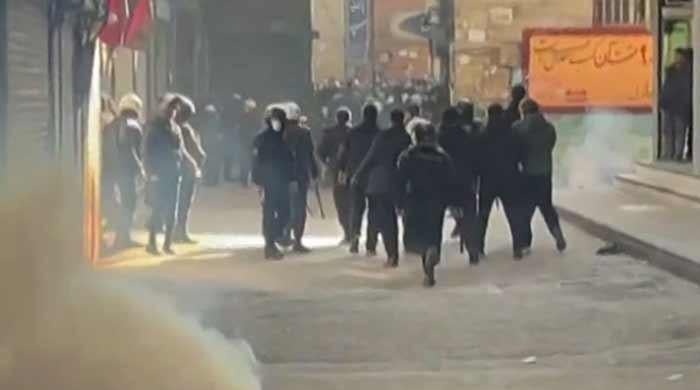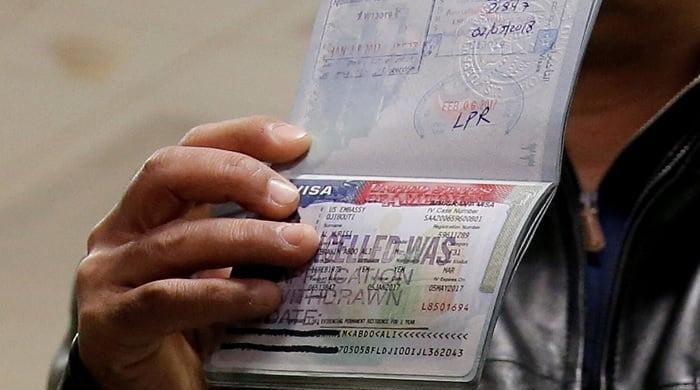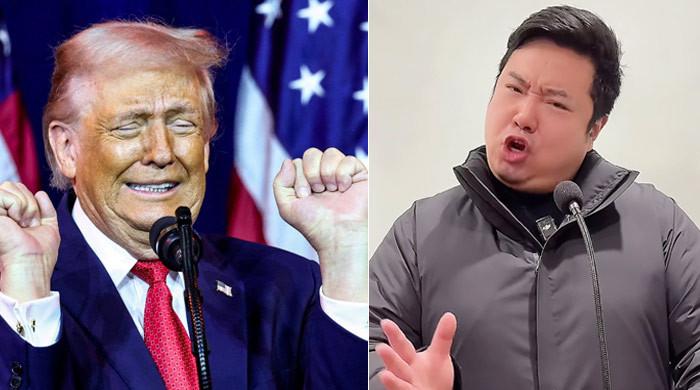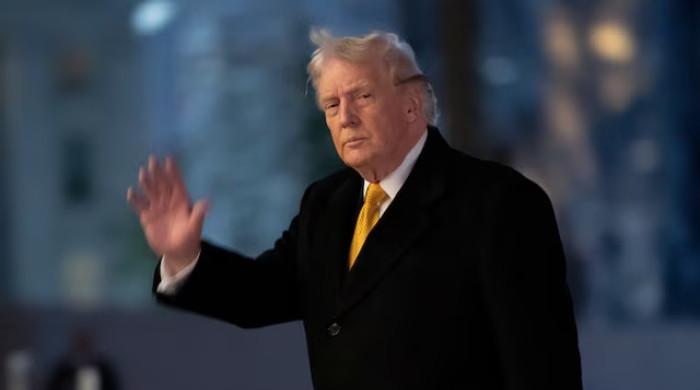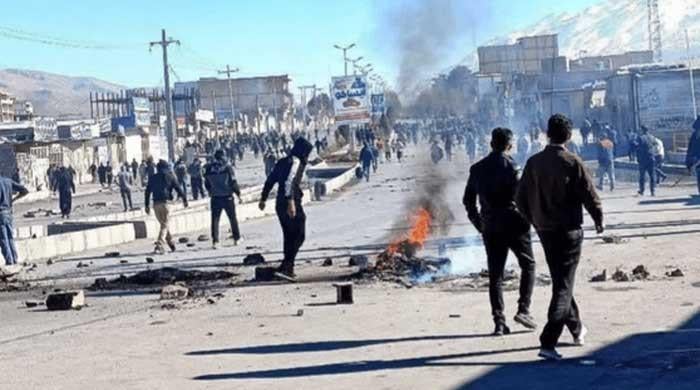Indian extremists caught vandalising Sikh Gurdwara in Melbourne
Four men, belonging to ultra-nationalist Hindutva groups, were nabbed by local Sikhs on the spot
February 02, 2023
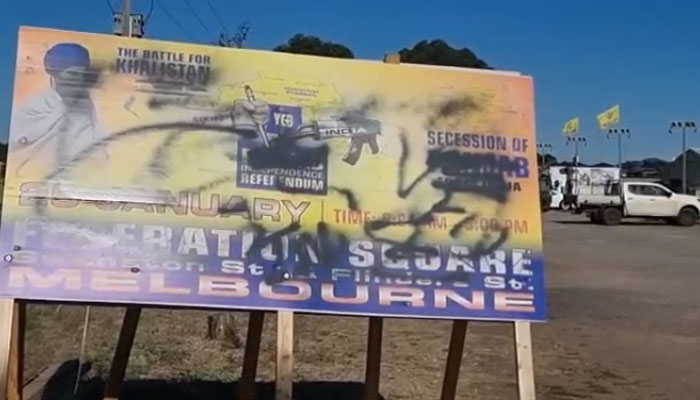
MELBOURNE: Four Indian Hindus linked with Bhartiya Janata Party (BJP) and Rashtriya Swayamsevak Sangh (RSS) were caught red-handed outside Melbourne's Miri Piri Gurdwara to graffiti the Gurdwara and posters of revered Sikh leaders placed outside the Sikh holy place.
A viral video shows four men, speaking fluent Hindi and Urdu, apologising for their attempt to vandalise the Melbourne Gurdwara a few hours before Khalistan Referendum was held at the Federation Square attracting over 55,000 Sikhs living in and around Melbourne.
The four men, belonging to ultra-nationalist Hindutva groups, were caught by local Sikhs on the spot.
According to local Sikh leaders, they saw the group moving around Gurdwara suspiciously in a car outside the Sikh holy place. They were seen with cans of spray, sticks and paint. When confronted, they admitted they came to vandalise posters on the property as well as the Gurdwara. The men, who apologised amid their confession, were handed over to authorities.
A video that went viral shows the gang leader accepting that their intentions were not good. He says in the video: "We are sorry. We came here with the intention to spray the posters [of the Khalistan Referendum]. My name is Katan, the others are Dinish, Hardik and Rushil. We are from Indian Gujarat but we live here in Melbourne."
He says in the confession video: "I am a Hindu. I am not against Punjabi Sikhs. We have come here to spray the posters."
The Sikh youth then tell the mobsters that videos have been found in their phones of other Sikh Gurdwaras vandalised. The gang leader accepts that he has been involved in vandalising at other places.
The four men were caught a few days after the local Indian Hindu community blamed Sikhs for vandalising their temples and the Indian government named Sikhs For Justice (SFJ) as the group behind such action.
Gurpatwant Singh Pannun, the Sikh leader and SFJ's Counsel General, then released videos showing Khalistan Referendum posters being targeted for graffiti.
Pannun showed a video in which a vandal is seen targeting pictures of Sant Jarnail Singh Khalsa Bhindranwale, the revered Sikh saint that became the face of Sikh activism in the 1980s.
Pannun said in his video statement: "For the last month, these Hindu supremacists backed by the Modi regime are vandalising Shaheed Bhindranwale and Khalistan Referendum banners."
Pannun said that the men linked to vandalism on holy Sikh figures were from hardline Hindutva groups, backed by India, defacing the posters and pictures.
He continued in the video: "This Indian regime is trying to use the old terror tactics against calling pro-Khalistan Sikhs as terrorists. Remember Modi and remember Hindus in Australia: this is not 1990 when you will label pro-Khalistan Sikhs as terrorists and they will go home."
"These Hindu nationalists in Australia are the offspring of those who committed genocide of Sikhs, who distributed sweets when Indira Gandhi attacked the Golden Temple. These men are offsprings of those extremist Hindutva elements."
"The SFJ believes in ballots, not bullets, unlike this Indian regime which has used bombs and bullets to silence Sikhs. Indian regime, you have failed in Canada and you will fail in Australia."
Tensions started locally around three months ago when banners appeared across Melbourne and a car rally on January 15 marked the 34th martyrdom day of Satwant Singh and Kehar Singh who were hanged on 6th January 1989 for assassinating the former Indian Prime Minister Indira Gandhi to avenge Operation Blue Star against holiest Sikh shrine — the Golden Temple of Amritsar.
The Sikh leader said that the Indian government was frightened at the Khalistan Referendum in Melbourne and was sponsoring attacks.
On Sunday at Federation Square, over 55,000 Sikhs attended the voting process and formed queues since morning to cast their votes for the non-binding referendum for the freedom of Indian Punjab and the establishment of an independent state of Khalistan.




